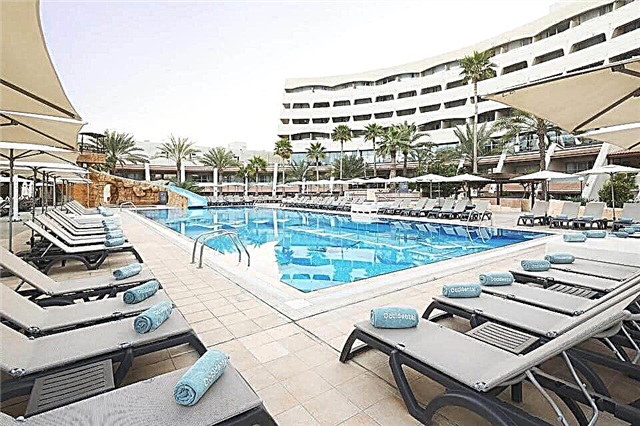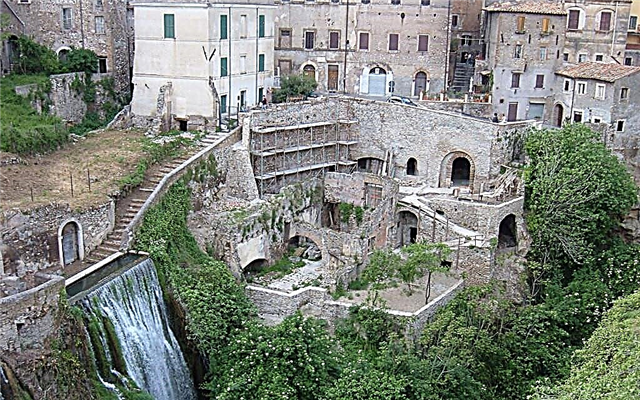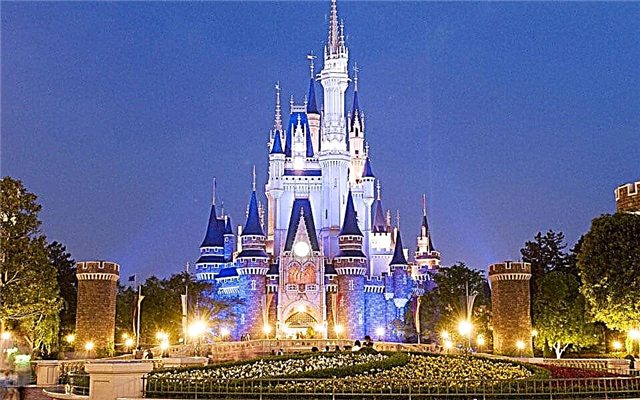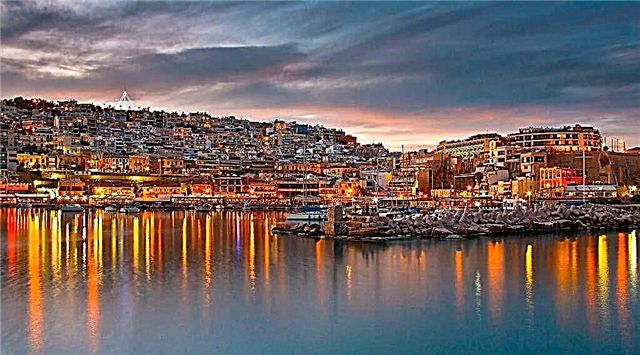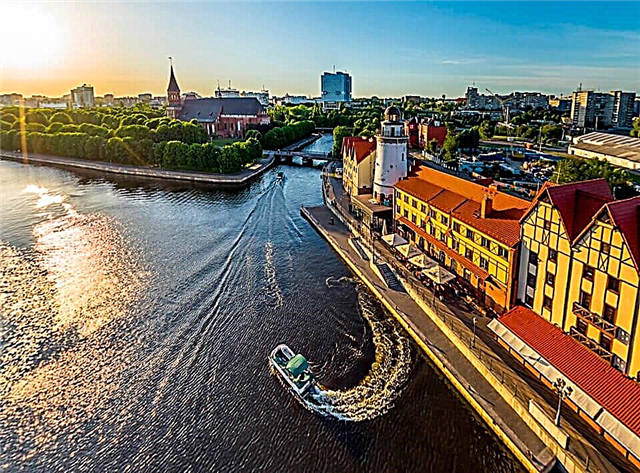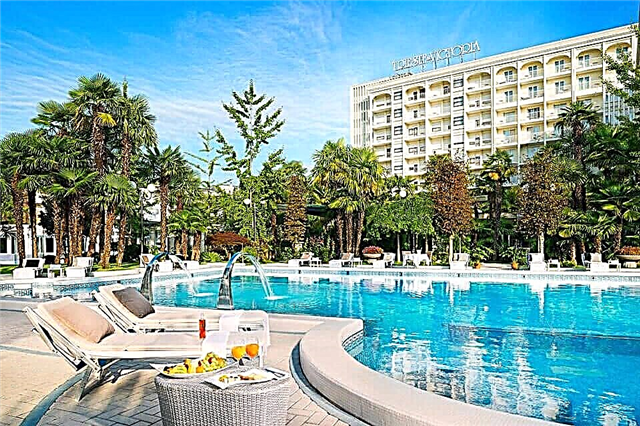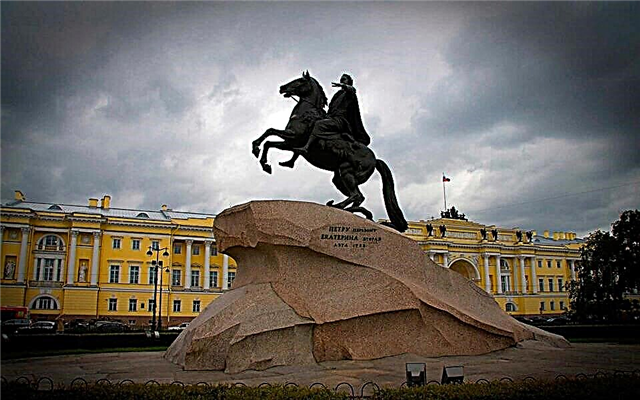St. Petersburg is one of those cities, it is almost impossible to see the sights of which in one day. But what if you are passing through this city and you have only a few hours to make a promenade through the cultural capital of Russia?
Especially for such guests, we have prepared a short overview of places that you should definitely visit within a short walk. Of course, in order to save time, we took care of drawing up the optimal route that will allow you to spend your precious hours wisely and with maximum benefit.
So, what you can see in St. Petersburg in 1 day on your own. Quite a lot, considering that the main attractions are compactly located. If you start from the historical center and move without delay towards the outskirts, then the most famous monuments can be viewed in all details.
You should move in the central part on foot: although it is slower, you will get more to see. In order not to accidentally go the other way, it is recommended to take a free card from the info center. All objects of interest to tourists are marked on it.
The map is also useful for regular trips around the city. And for the hungry, cafes and restaurants offer delicious food for every budget.
Monument to Nicholas I

It is convenient to start your tour of the city from the monument to Nicholas 1. By the way, it is the Arab unit that is present in the inscription. The opening took place in July 1859.
And according to tradition, everything that is depicted on the monument has a certain meaning:
- The emperor is depicted in the uniform of a guardsman, because he was the chief of this regiment.
- The 4 figures framing the pedestal symbolize Faith, Wisdom, Strength and Justice. And the faces of the statues repeat the features of the wife and 3 daughters of Nicholas 1.
- All significant deeds of the emperor are immortalized on the high reliefs: the opening of a bridge on the Moscow-St. Petersburg railway, the suppression of the Decembrist uprising, the adoption of the first code and awarding Speransky on this occasion, suppression of the cholera riot.
It is noteworthy that St. Isaac's Cathedral, the monument to Nicholas 1 and the Bronze Horseman are located on 1 straight line, and Nicholas 1 looks at the back of Peter the Great. Wits of the 19th century immediately put together a saying: the fool hurries after the clever, but Isaac, you see, interferes.
After the October Revolution, it was decided to destroy the monument. But the scientists managed to defend the attraction. For this, they even composed a legend: there are no more equestrian sculptures in the country that would rely on 2 points of support. And Nicholas 1 continued to stand, already as a unique structure.
There was an assumption that balance is achieved due to the fraction poured into the horse's body: this is how the center of gravity is changed. But this turned out to be a legend; during the restoration, no foreign objects were found inside the horse. And the monument stands due to the fact that the hind legs of the animal are attached to the base with metal rods.
We recommend reading what to see in St. Petersburg:
Hotel Astoria Rocco Forte

Astoria is conveniently located: the main monuments are within walking distance of it. In 1908, there was a building on this site, which was being built by an English joint-stock company. It was planned to open a new hotel in 1909, but the ceremony took place only in December 1912.
Initially, it was assumed that the hotel will have deluxe rooms. The building must be fireproof and waterproof. For the convenience of the guests, it was decided to organize a winter garden, a hall with a stage, and several living rooms.
The basements are protected from flooding and are intended for internal purposes. All services (elevators, sewerage, ventilation, heating) are designed taking into account the latest developments. Astoria holds this level to this day.
Astoria went through different times:
- in 1916, it began to be used as a military (officers lodged here)
- in 1917, Astoria was stormed by the Bolsheviks (due to the fact that it was the headquarters of officers)
- immediately after the October Revolution, it was nationalized (albeit soon corporatized)
- in 1929 Astoria entered the Intourist department (stayed there until 1996)
- in 1941 it housed a hospital for artists, writers, musicians who remained in the besieged city
- in 1996 Astoria is operated by Rocco Forte Hotels
Today it is a comfortable and romantic hotel. Celebrities from all over the world stay here. And the interiors have been immortalized in several Russian films.
Saint Isaac's Cathedral

The cathedral was built on the site of the temple, which, according to Alexander 1, did not correspond to the concept of building up the center of the capital. Among the projects presented, the work of Montferrand was recognized as the best. The construction took 40 years. In order to gild the dome, it took 100 kg of pure gold. And the cathedral itself is considered a museum of colored stone: 43 types of minerals were used in its design. The walls are decorated with panels of jasper, porphyry, green and yellow marble.
The interiors were created by: Karl Bryullov, Ivan Vitali, Vasily Shebuev. Montferrand believed that during the service 7000 parishioners could stand in the hall, but today it can accommodate much more: in the 18th century, ladies wore too fluffy skirts.
After the October Revolution, the cathedral was desecrated and plundered: the Bolsheviks received 45 kg of gold and more than 2000 kg of silver. The services were banned in 1928. But Isaac was lucky: it was not blown up, but used as an anti-religious museum. The basements of the cathedral were used as storage facilities for art objects during the Patriotic War of 1941-1945.
In 1948 the cathedral became a museum. Services resumed in 1990, but only on public holidays and Sundays. Tours are regularly held in Isaac. Tourists who come to the city for the first time must climb the Isaac colonnade: from here, an excellent panorama of the Neva and the old center opens.
The climb itself is quite laborious: you have to climb the spiral staircase on foot. But beautiful views atone for all suffering.
Savior on Spilled Blood

The temple was built on the site where the assassination attempt on Emperor Alexander II was committed.
The new emperor Alexander 3 set 2 conditions:
- the building should be built in the Russian style
- at the place where the emperor fell, there should be a chapel
These simple requirements turned out to be difficult to implement: it was only the third time that the project of the professor of the Academy of Arts Parland was chosen. The building was erected pretty soon, and the finishing took 10 years. The temple was consecrated in 1907.
The Savior on Spilled Blood repeated the history of many Orthodox churches. After the October Revolution, it was desecrated and plundered, then used as a grocery store. During the Great Patriotic War, a morgue was equipped in the basements, and after liberation - a place to store theatrical props.
Fortunately, the unique building has survived, and in 1970 it was even restored. During the work, a fascist shell was found, which hit the ceiling, but did not explode. The restoration lasted so long that the people came up with a legend: as soon as the cathedral was freed from the scaffolding, the power of the Soviets would fall.
As often happens, the fairy tale has come true: the exterior work was completed in the summer of 1991. The building was returned to the Russian Orthodox Church, and since 2007 regular services have been held here. Savior on Spilled Blood is a functioning temple and at the same time a part of the Museum of St. Isaac's Cathedral.
Senate square

At the beginning of the 18th century, Peter the Great ordered the construction of the Admiralty on the territory between the Moika and the Neva. It should be not only a building, but also a fortress with a shipyard. The open space in front of the fortification should have been perfectly shot through when the enemy attacked from the west.
But after a while, the fortress ceased to be an important strategic object, and it was decided to rebuild the free space into a city square. At first it was an ordinary meadow. Then, from the west, he began to build up residential buildings. And in the southern part of the meadow, the church of Isaac of Dalmatia was erected from wood.
In the middle of the 18th century, instead of the palace of Alexander Menshikov, a house was built for Bestuzhev-Ryumin. And already during the reign of Catherine the Great it was handed over to the Senate. The formation of the Senate Square was completed: this was the name of the territory between the Senate and the Admiralty.
The new buildings of the Admiralty formed the eastern border of the square, and the monument to Peter the Great (The Bronze Horseman) became an integral part of it. It was then that the square was renamed Petrovskaya, but the name did not catch on.
On December 14, 1825, the blood of the Decembrists was shed on Senate Square. 100 years after the suppression of the uprising, the square was renamed again: it became the square of the Decembrists. In 2008, the original name was returned to it.
Bronze Horseman

The Bronze Horseman is installed on Senate Square. This is her business card and the main symbol of the city. The monument is unique both compositionally and technically. The architect Falconet and his assistant Marie-Anne Collot worked on the sculpture. The Frenchman used his own concept of creating the image of the emperor: he believed that the king was, first of all, a creator and benefactor for his country.
The fact that Peter is a warrior is reminiscent only of the sword at his belt. This interpretation did not suit everyone, so Falcone was forced to leave the country before the end of all work. The monument was installed by Fedor Gordeev.
In general, a whole team worked on the composition:
- Falcone - project author and leader
- Marie-Anne Collot sculpted the head of the emperor
- Grigory Korchebnikov built a ship to transport a pedestal from near Lakhta
- Emelyan Khailov carried out (together with Falcone) the casting of the Horseman from bronze
- Fedor Gordeev supervised the installation of the monument
After the opening, the monument was surrounded by a fence, but later it was dismantled. It is now planned to restore the fence to protect the Bronze Horseman from vandals. It is interesting that the sculpture began to be called the Bronze Horseman after Pushkin wrote his poem.
Palace Square

The main square of the city is named after the central building - the Winter Palace. The square was designed by the architect Rossi. The main task is to combine existing buildings into a single ensemble by adding new ones:
- From the south, the square was enclosed by the General Staff building. Its façade stretches for more than 500 m. The buildings are connected by an arch depicting bas-reliefs. The arch consists of 3 parts, which are slightly spaced apart from each other. This achieves the effect of a gradual vision of space. The arch is crowned with a chariot in which the goddess Glory stands.
- The Guards Corps closes the Palace Square from the east. The building was supposed to be in harmony with the Winter Palace and the General Staff Building. The architect Bryullov managed to build a completely neutral structure, which organically complemented the composition.
- It is impossible to imagine the ensemble without the Alexandrian Column (Alexander Column). This stele of polished pink granite was erected to commemorate Russia's victory in the war against Napoleon. The author of the monument is Auguste Montferrand. At the top of the column is an angel holding a cross. This part of the monument was designed by Orlovsky. The technical solution for installing the column is striking: it is not fastened to the base: it is held due to its own weight.
The most stunning element of the ensemble is the Winter Palace. At the time of construction, this building was the tallest and largest: it occupied almost 9 hectares of the urban area. There was even a law in the capital: it was forbidden to build houses higher.
Main Admiralty building

Peter set the task: to build a fortress and at the same time a shipyard in the place of the most probable enemy attack. The tsar, together with Menshikov, spent a whole week looking for a suitable territory. It turned out to be a place opposite Vasilievsky Island, where the Neva is already all.
This was required in order to shoot at the enemy with direct fire. The fortress was designed in the shape of the letter P, with its lower part facing the Neva. Later, the free territory was built up.
The work was carried out quickly: a year later the first ship left the shipyard. On the side of Nevsky Prospect, a dug and water-filled ditch served as a barrier. The shipyard fortress became practically impregnable. Around the Admiralty there was a free territory (meadow), which later became the Alexander Garden. In addition to its direct purpose, the Admiralty performed peaceful functions: the tower was a fire tower (in case of fires in the city) and a signal tower (in case of floods).
The Admiralty was decorated with 56 statues symbolizing different spheres of human life. During the restructuring of Isaac, a temple was located here, and the priests fought with the indecent appearance of the decorations. The struggle was crowned with success: the naked statues were dressed, and the pagan ones were replaced.
The spire of the Admiralty is the junction point of three highways of the city: Nevsky Prospect, Gorokhovaya Street and Voznesensky Prospect. The igloo (as Pushkin called the spire) is crowned with a ball with a boat. Treasures are hidden in the ball: the draft constitution of the USSR laid down during the restoration in the 70s and Soviet newspapers.
General Staff Building

Even before the war with Napoleon, Alexander I carried out the reformation of the General Staff. All divisions were located in one place. This was the purpose of the Molchanov house, bought out with state money.
But after the victory, it became clear that the premises were small. It was also necessary to place diplomatic services. The king decided to build another wing of the building. To implement the project, money was allocated from the treasury to buy out the houses adjacent to the existing building.
Later, Alexander decided to relocate the Ministry of Finance to the Palace Square. Finance Minister Guryev liked the idea of moving the institution: it was prestigious to have a view from the windows of the Winter Palace.
The architect Rossi was commissioned to carry out the idea of the emperor. The difficulty lay in the fact that it was required not only to build new structures along an imaginary arc, but also to create a single ensemble with the Winter Palace. The tsar demanded a unified concept for the facades of the buildings.
Construction began in 1820 and lasted 10 years. After completion, the western wing was transferred to the General Staff, and the eastern wing was transferred to the Ministry of Finance and the Ministry of Foreign Affairs. Rossi accomplished the impossible: he combined the Russian baroque of the Winter Palace and the Empire style of his project.
Naturally, the royal residence dominates. Today, the western wing houses the command of the Western Military District. In the east - until 1993, the city police department lodged, and in 1993 the building was transferred to the Hermitage. Today, thematic and permanent exhibitions are held here.
Hermitage

The history of the appearance of the Hermitage is conventionally divided into several stages:
- The building of the Winter Palace became the basis of the ensemble. It began to be built during the reign of Empress Elizabeth Petrovna in the middle of the 18th century. The project was developed by Rastrelli. Initially, the building was designed in the Russian Baroque style, but later the author added elements of the classics. Work began in 1754 and lasted 8 years.
- And Catherine the Great continued construction. During her reign, the Big and Small Hermitages and the Hermitage Theater were erected. According to Felten's project, a building for the Queen's entertainment was built in a style that combines the features of the Baroque and the classics. 5 years later, Vallin-Delamot added a new building to the building and connected it with the main hanging gardens. The result is the Small Hermitage.
- In order to give the growing funds where to place, Felten built another building: the Great Hermitage. And then Quarenghi added 1 more wing. It houses a collection of paintings by Italian artists.
- In 1852, under the leadership of the architect Leo von Klenze, one more building was built: the New Hermitage. And the interiors were designed by Andrei Shtakenshneider.
The building itself is a landmark of the city. But there is something to see inside too. The collection of the Hermitage began to be created under Catherine the Great. And today in the center you can see unique paintings and sculptures. The expositions are complemented by interactive screens. Thematic exhibitions are organized.
Zoo

The zoo is located in the very center of the city, in the Alexander Park. It is the smallest of all parks in Russia. But at the same time, his collection is impressive: more than 2500 animals. It began in 1865 as a private menagerie, and little is known about its history: the institution's archives were destroyed in 1940. But a lot has been written about how 16 workers, dying of hunger, rescued animals during the blockade. In memory of their feat, the zoo continues to be called the Leningrad zoo.
The animals are kept in excellent conditions. And the pride of the zoo is the ornithological department. Here you can see birds listed in the International Red Book. The department of predators is interesting. The enclosures with Ussuri tigers, leopards, lions and bears are always crowded. The zoo has a good collection of small predators: martens, raccoons, sables.
A walk through the well-groomed area will pleasantly diversify the city tour. Children will especially like it: you can watch how the employees feed the animals.
Russian Museum

In April 1895, the last emperor of Russia, Nicholas II, acquired the Mikhailovsky Palace with all its auxiliary premises and a garden to the treasury. The building houses a new institution: the Russian Museum of Alexander 3.
The first funds are small:
- 122 paintings donated by the Academy of Arts
- collection of paintings from the Gatchina and Alexander Palaces (95 pieces)
- 80 paintings donated by the Hermitage
- donations from individuals (Tenisheva, Lobanova-Rostovsky)
In the future, Nicholas 2 offered to buy canvases for state money, or to accept them as a gift. Moreover, the canvases placed at the Academy of Arts could be transferred to the Russian Museum only 5 years after the death of the author. The exposition opened in 1898.
In the first 10 years of operation, the funds have more than doubled. After the October Revolution, the Russian Museum continued to work. Purchasing commissions worked on replenishment of the collection.
Today the complex consists of:
- Mikhailovsky Palace
- Mikhailovsky Castle
- Benois corps
- Marble Palace
- House of Peter 1
- Stroganov Palace
The center also includes garden ensembles: Mikhailovsky Garden, Summer Garden, Summer House of Peter 1. It is unlikely that it will be possible to fully inspect the complex in 1 day, but you can take a sightseeing tour.
House of Peter I

This was the first completed building in the new city: Peter I built it together with several assistants as soon as the Peter and Paul Fortress was laid. But the laying of logs is specific: this is how the Swedes built log cabins.
Therefore, historians assume that captured soldiers took part in the construction.
The house itself is now lined with bricks, and initially it was only painted to resemble a stone. It was called in all documents a palace, although it was small and modest and was intended for the king's rest only in the summer. There was a residence near the water on Berezovy Island.
From his home, Peter watched the construction of the Peter and Paul Fortress. But after the construction of the Winter Palace, the tsar lost interest in the unprepossessing structure. No one else lived in the house, it began to collapse. But Peter ordered the first building of the city to be repaired, revetted with stone and taken under constant supervision. So the monument was preserved. Today this unique palace is eagerly visited by tourists: it is perfectly preserved.
Mikhailovsky Castle and Garden

The Mikhailovsky Garden was finally designed by Karl Rossi. But the park ensemble was re-planned many times, taking into account the requirements of the new owners:
- In 1716, LeBlanc, commissioned by Peter I, planned 3 Summer Gardens. One of them was located around the palace of Catherine 1. It was called Swedish. There were ceremonial alleys, gazebos, sculptures. According to Leblanc's project, a garden with fruit trees and shrubs, beds with herbs and medicinal plants were laid out, greenhouses were built.
- During the reign of Anna Ioannovna, the Swedish garden was replenished with a nursery and aviaries for keeping hares and roe deer. The animals were used for ceremonial hunting.
- Rastrelli redesigned the garden by the order of Elizaveta Petrovna. Rectangular ponds with fountains appeared here, the territory was divided into geometric shapes, and a flower garden was laid out.
- Pavel Petrovich demolished the palace of Elizabeth 1, and on the foundation ordered the construction of the Mikhailovsky Castle, a new royal residence. And the Swedish garden hasn't changed.
- After the death of Pavel, the Mikhailovsky Castle was abandoned. Then he was transferred to the Engineering School.
- Rossi has been working on the garden since 1819. It retains the unique hydraulic system of the park and some of the sites planned by its predecessors. Mikhailovsky Garden is closed for free visits, it is a royal residence.
- After the October Revolution, the ensemble underwent changes. By 1960, the park was in critical condition: tennis courts and playgrounds were built. The castle was slowly crumbling.
In 2007, a large-scale reconstruction of the ensemble was completed. Today it has returned to its historical appearance.
Peter-Pavel's Fortress

It was from the Peter and Paul Fortress that the city began to be built. And it began as a fortification, a small garrison of which would be able to repel the attack of the Swedish army. Petersburgers consider Peter and Paul to be the heart of the city.
The place on the Hare Island was chosen by Peter 1. And the fortification was built by engineer Lambert de Guerin. After the place was consecrated, the ark with the relics of Andrew the First-Called was laid. The bastions were erected at the same time, wood and earth served as the material.
Parts of the fortress were named after the construction manager:
- Naryshkin
- Zotov
- Gosudarev
- Menshikov
- Trubetskoy
- Golovkin
Later, the fortifications were faced with stone. And for the convenience of movement, Zayachiy Island was connected to the Petrograd side by a bridge. The fortress was being completed: in 1707, the Petrovsky Gates were erected. They were decorated with statues.
The Mint worked in the fortress, there was an ammunition depot. The garrison could fight without food supplies for a long time. The Peter and Paul Fortress was a tragic place: prisoners were kept in it. Among them are the Decembrists, Dostoevsky.
Alexandre Dumas compared her to the Château d'If and predicted that soon she would reveal her terrible secrets. Today, permanent and thematic exhibitions are open on the territory of the fortress. A sightseeing walk around the fortress will take about an hour, and it will take several weeks to get to know the ensemble in detail.
Grand Model Russia

This is a new museum: it has been operating since June 2012. It shows a model of Russia. Moreover, this is not an exact copy of the country: on an area of about 800 square meters, typical parts of the landscape, movements of all types of transport, unusual situations (such as a prison break) are reproduced.
The model is controlled by a system of computers, but each visitor can take part in creating the situation. For example, start the movement of cars on the highway or activate the life of a small suburban village.
Tourists are attracted by the alternation of day and night, which occurs after 13 minutes. In order to prevent shadows from falling on the model, a system of LEDs of almost 1,000,000 bulbs was used.
But the Grand Model offers more than just an interactive exhibition. Quests are held, live lessons for children and adults, you can even celebrate a birthday. For the convenience of visitors, there is a cafe, and it is recommended to leave the car in a paid parking lot near the center.
Divo Ostrov

Sometimes you want to take a break from the abundance of historical sites in St. Petersburg. You can do this in Russian Disneyland: Divo Island. The park has been operating since 2003. Here is a well-groomed area located next to the Gulf of Finland.
The air is filled with the scent of pine needles mixed with the salty wind of the Baltic. Squirrels run along the alleys, willingly accepting treats. 50 rides will be interesting for children and adults.
Planetarium

The City Planetarium has been operating since 1959. Today it is one of the three largest planetariums in the country. The program is rich: adults and children will definitely find something to their liking. The halls have interactive simulators with which you can see the stars and galaxies.
But that's not all: here you can celebrate a birthday or conduct a quest. And what could be more unusual than a romantic date surrounded by stars, comets and planets. Hungry tourists can grab a bite to eat at the café, which offers Russian and European cuisine.
Dolphinarium

If you need relaxation after a day full of excursions, there is no better place for the dolphinarium. Here you can watch a performance featuring:
- bottlenose dolphins (Black Sea dolphins)
- beluga whales (white polar whales)
- sea lions
- walruses
Animals show unusual tricks under the guidance of trainers. The performance can be filmed, and after the end, you can swim surrounded by friendly Black Sea dolphins. The only inconvenience: strong spray that splashes on the guests sitting in the front rows.
Park named after the 300th anniversary of St. Petersburg

It is an ideal place for relaxation and leisurely walks. The park is located in the northwest of St. Petersburg and is adjacent to the Neva Bay. The complex was laid in 1995, and by 2003 the storm sewer was reconstructed, the bank was fortified and lawns were laid, and volleyball courts were built.
Alleys with fountains, flower beds, benches for relaxation are laid out throughout the territory. There is even a small apple orchard (the trees were given to the city by the residents of Helsinki). Interesting events for guests and residents of the city are regularly held on the territory.



